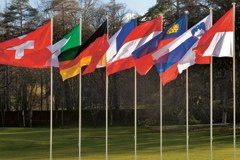News
The promotion of a common Legal Framework
Nov 30, 2011
/
CIPRA Internationale Alpenschutzkommission
The Alps consist of eight different countries, each of which has its own legal framework. A specific working group provided an overview of the different legislations in force at various governance levels that potentially affect ecological connectivity.

Image caption:
Not only the different laws of the eight Alpine countries lead to difficult situations when connectivity needs to be improved - regulations in protected areas and their surroundings also play a major role. © Laurent Mignaux, Meddat
The group identified strategies and tools to deal with such diversity and complexity. The analysis identified possible options to improve the consistency of regulations and protection strategies for protected areas and buffer zones across the Alpine range, as well as the implementation of "safe" ecological corridors from one administrative area to another.
The analysis work consisted of assessing the legal status of six Alpine countries with regard to protected areas and of analysing the legal situation of protected areas in four pairs of neighbouring Alpine states (Italy/France, Switzerland/Italy, Austria/Germany and Italy/Austria). In addition, in order to overcome the difficulties represented by the different legal statuses of neighbouring protected areas, EU legal tools such as the European Grouping of Territorial Cooperation were analysed and their feasibility assessed in relation to actual cases.
The ECONNECT researchers found that cooperation is required not only between the managers of protected areas but also between policy makers and across borders. Moreover, outside protected areas, the adoption of specific provisions (activities, projects, plans or programs outside or close to the core area) is required. In addition landscape protection is an important tool because landscape features are often seen as part of the ecological network. Furthermore the "cultural landscape", in this context, has become an ever more important concept. Finally current existing cooperation tools in the form of agreements and twinning have to be institutionalized.
The analysis work consisted of assessing the legal status of six Alpine countries with regard to protected areas and of analysing the legal situation of protected areas in four pairs of neighbouring Alpine states (Italy/France, Switzerland/Italy, Austria/Germany and Italy/Austria). In addition, in order to overcome the difficulties represented by the different legal statuses of neighbouring protected areas, EU legal tools such as the European Grouping of Territorial Cooperation were analysed and their feasibility assessed in relation to actual cases.
The ECONNECT researchers found that cooperation is required not only between the managers of protected areas but also between policy makers and across borders. Moreover, outside protected areas, the adoption of specific provisions (activities, projects, plans or programs outside or close to the core area) is required. In addition landscape protection is an important tool because landscape features are often seen as part of the ecological network. Furthermore the "cultural landscape", in this context, has become an ever more important concept. Finally current existing cooperation tools in the form of agreements and twinning have to be institutionalized.

